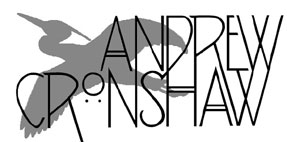
- Andrew Cronshaw website -
- Andrew Cronshaw MySpace -
- Cloud Valley Music website -
- Andrew Cronshaw website -
- Andrew Cronshaw MySpace -
- Back to Reviews Introduction page -
Written in fRoots issue 190, 1999
MUZSIKÁS
The Bartók Album
Hannibal HNCD 1439 (1999)
Many who listen to Béla Bartók’s compositions, which fall within that large,
revered but ill-defined realm of music known as “classical”, are at most only
dimly aware that he had some connections with folk music. Actually he wasn’t
only one of twentieth century Europe’s most brilliant composers, he was probably
its most exhaustive and influential collector of traditional songs and music,
making written transcriptions, with enormous detail of the performance, every
grace note and pitch variation, of many thousands of items, not only from
Hungary but also from Slovakia, Romania, Yugoslavia, Turkey and North Africa.
It was clear to Bartók that at the time
classically trained musicians wouldn’t want to forsake their tone and intonation
to discover that in the villages were musicians who had a completely different
sense of these things, far from the neat equal temperament and pristine
Stradivarity that had come to prevail in posh music, but it was their music that
was the power behind his compositions, giving them the vibrancy and strangeness
which came to so impress the classical establishment. Bartók was indeed a great
originator, but he had the energy, discerning ear and open mind that gave him
access to a huge melodic, rhythmic and harmonic storehouse most of his audience
had not only never encountered but would probably have rejected as peasant
scrapings if they had.
The object of The Bartók Album is to give
an idea of the Hungarian music that excited him and continues to excite the
members of Muzsikás, and to show some of its effect in Bartók’s own
compositions, specifically in three of his 44 tradition-inspired violin duos,
which feature Muzsikás’ lead fiddler Mihály Sipos with Romanian-born classical
violinist Alexander Balanescu. Virtually all the rest of the material on the
album is drawn from Bartók’s collections. For this project Muzsikás and
Sebestyén immerse themselves in the techniques and styles of the original
performers rather than making conscious developments, to get close to the effect
of what Bartók heard, and some of his original Edison phonograph field
recordings are included, as in the sequence on tracks 16-18 of the same tune in
phonograph, Muzsikás and Bartók versions.
There are many fine Hungarian bands, but it
sometimes seems that Muzsikás is the only one that World Music has heard of for
its festivals and praise. There’s nevertheless absolutely no doubt that they
deserve high status, and the fact that they’ve avoided fashion-ligging and made
this album shows their class. Cherishing not just the notes but the people who
made and still make it, they’re right inside this music which is so full of
implied notes, subtleties of pitch, tone and sliding harmony that Bartók’s
notation is the only way of getting close on paper. His transcriptions, though,
are so detailed that they’re virtually impossible to play off the page, and
without the detail much is lost, so the music’s only path into the future is
alive, still being played and sung, and Muzsikás and Sebestyén know how to do
that. I call track 19, Lads’ Dance From Fuzes, to give evidence.
© 1999 Andrew Cronshaw
You're welcome to quote from reviews on this site, but please credit the writer
and fRoots.
Links:
fRoots - The feature and
review-packed UK-based monthly world roots music magazine in which these reviews
were published, and by whose permission they're reproduced here.
It's not practical to give, and keep up to date,
current contact details and sales sources for all the artists and labels in
these reviews, but try Googling for them, and where possible buy direct from the
artists.
CDRoots.com in the USA, run by
Cliff Furnald, is a reliable and independent online retail source, with reviews,
of many of the CDs in these reviews; it's connected to his excellent online magazine
Rootsworld.com
For more reviews click on the regions below
NORDIC
BALTIC
IBERIA (& islands)
CENTRAL & EASTERN EUROPE, & CAUCASUS
OTHER EUROPEAN AMERICAS OTHER, AND WORLD IN GENERAL
- Back to Reviews Introduction page -